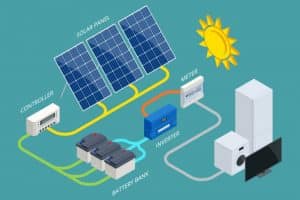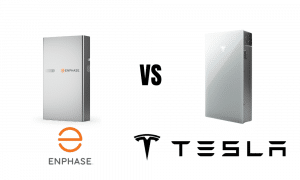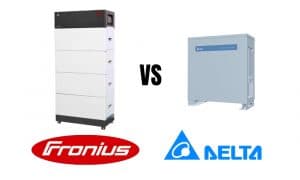Blackouts are a pain, especially now that Australia is said to be facing a decade of energy instability due to the lack of new power sources. The nation is currently transitioning away from fossil fuels, which also means that there is a higher demand to build renewable energy generation and storage capacity to fill in the gaps left by the closure of coal-fired power stations. This all poses a threat to energy reliability.
In an August 2023 update, the Australian Energy Market Operator (AEMO) predicted “larger reliability gaps” with “generator unplanned outage rates… forecasting higher than previously.” According to AEMO, around 20 per cent of the AU’s coal, gas and diesel generation fleet is set to close in the next ten years, which includes Origin’s Eraring Power Station. Therefore, NSW is expected to experience shortfalls from 2025.
The good news is there is a way to keep your home’s power going even during an outage. In NSW, new government incentives are making that possible with residential battery storage. These batteries, combined with solar panels, can transform your home from a blackout victim to self-sufficient.
New NSW Battery Incentives
On 1 November 2024, new battery incentives will be available to NSW residents via the Peak Demand Reduction Scheme (PDRS). The PDRS in NSW provides financial incentives for households and businesses to reduce energy consumption during peak hours, targeting devices like residential batteries, air conditioners, and pool pumps.
Changes to the PDRS, effective from August and November 2024, include revised activities and new incentives for installing and operating residential batteries, aiming to lower electricity costs, reduce power outage risks, and support NSW’s emission reduction targets.
The incentives will be available from November 2024 to solidify the Scheme Administration (IPART) compliance processes, accredit the approved suppliers, and engage and train staff for audits.
What you’ll get
For eligible homeowners and business owners, you can get between $1600 to $2400 off the upfront installation battery costs with existing solar. However, this will depend on the battery size. The eligibility is limited only to batteries between 2 and 28kWh in capacity to ensure consistency with schemes in other AU states.
You can also get between $250 to $400 when you connect your home or business to a Virtual Power Plant (VPP). This incentive is available twice with a minimum of three years apart.
Those with no solar yet can still take advantage of the new battery incentives. The incentive can be priced into a quote for a new solar and battery system installation.
On the other hand, the VPP participation incentive is only available for already-installed batteries and the battery has been signed onto a VPP with at least six years of the manufacturers’ warranty remaining and meets the equipment requirements.
Keep in mind that the incentive doesn’t apply to off-grid batteries as they can’t help reduce the load.
Are you eligible?
Here are the eligibility requirements:
- You are a resident or business owner in NSW with an existing rooftop solar system
- Your solar system complies with relevant standards and regulations
How to access the NSW battery rebate
- Verify your eligibility.
- Choose an accredited supplier known as Accredited Certificate Providers (ACPs). The approved suppliers by IPART will be listed from 1 November 2024.
- Get a quote and ensure it includes the rebate.
- Complete the installation and confirm that it meets all safety and technical requirements.
- If you want to take advantage of the VPP rebate, you can connect to a VPP with the help of your solar installer.
Why traditional backups fall short
In the event of a blackout, traditional generators might seem like the best solution. Unbeknownst to some, they come with several drawbacks. For one, although the initial investment is significantly similar to getting a solar battery, a generator requires more frequent maintenance that adds to the long-term expense.
Another drawback is that finding fuel during a blackout can be hellish. Some petrol stations may be closed or out of stock. Finally, since they run on petrol or diesel, it contributes to air and noise pollution.
With these, the new battery incentives provide a more reliable, sustainable and user-friendly alternative for a resilient home. Additionally, an increase in battery storage capacity will help NSW reduce greenhouse emissions, targeting a 70% reduction by 2035.
Beyond outages
The perks of battery storage go beyond surviving blackouts. Energy prices usually spike during peak usage times, and batteries allow you to store excess solar energy generated during the day and use it during these expensive periods. This potentially lowers your overall energy bill.
Also, with batteries and solar power, you’ll be using clean, renewable energy to keep your home running, even during outages. This not only benefits your wallet but also helps reduce your environmental footprint.
With the upcoming NSW battery incentives, you can take control of your home’s energy security. These incentives make solar battery storage more affordable and make your home less reliant on the grid… or even better, fully energy independent!
Energy Matters has been in the solar industry since 2005 and has helped over 40,000 Australian households in their journey to energy independence.
Complete our quick Solar Quote Quiz to receive up to 3 FREE solar quotes from trusted local installers – it’ll only take you a few minutes and is completely obligation-free.













































